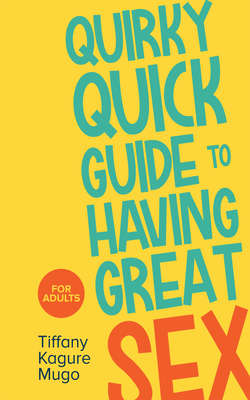Читать книгу Quirky Quick Guide to Having Great Sex - Tiffany Kagure Mugo - Страница 7
На сайте Литреса книга снята с продажи.
4
ОглавлениеRISKY BEHAVIOUR OR PRETTY PLEASURABLE: WHAT ARE THE MESSAGES AROUND SEX?
Learning about sex is hard. The way that the information is put out there has changed over time, up and down and back and forth. Across history there were (and still are) numerous examples of sex positive societies, ones in which people were taught about sex and sexuality in a healthy holistic way.
Want to know about your body – explore it. Want to know the touch of another human and what it feels like? Want to know what that raging vortex is inside that seems to pool in your pants/small square of cloth that covers your front bits?
In Africa, the pan-ethnic Sande and Bandu, kpanguima (safe spaces for teachings and ceremonies) taught the power of pleasure as an energy that needed to be handled and teachings in the curriculum taught that everyone had a right to enjoy sex.5 Within these sexuality schooling spaces, sexual pleasure was seen as a social good, and sexual expression as a normal part of adulthood, which meant there was no need to police it with harsh measures.
Basically, sex is a part of life so be chill.
Then there were eras where people put it in the law that you couldn’t even show your ankles and having a sexual appetite was so pathologised women had to visit their local GP. Should I even quote the Victorian greatest hits here or do we all know them?
Society has gone back and forth on how to engage in comprehensive sex education and is now (again) at a crossroads: shall we scare the living heebie-jeebies out of everyone and put everyone in a sexual box? Or should we have a holistic and healthy approach that looks at everything around us in an ever-changing growing world?
The great debate rages on and here are the two main contenders: a risk-based approach and a pleasure approach.
| Risk-based approach | Pleasure approach |
| 1.When the message that goes out it is all about classic spook tactics: HIV, STIs, unwanted pregnancies and other deep and scary parts of sex. | 1.The message is about practices that promote pleasure and wellbeing, and sex being about living your best life (rather than sex leading to your worst life). |
| 2.Completely forgets about the lovely parts of why people have sex, like pleasure and enjoyment. | 2.Sexual pleasure is not about ignoring the negative parts of sexual activity like STIs, HIV and unwanted pregnancies but giving accurate information about them. It is about giving this information in a way that empowers rather than scares people. It revolves around changing the messages from ‘Feel fear and shame!’ to ‘Here is some info, make an informed decision.’ |
| 3.Focuses on shaming people and making them scared of sex in order to avoid it. Freaks people out so they protect themselves: e.g. if you do not use a condom you will get HIV and become pregnant, and also be generally an awful person. | 3.Understands that people are having sex for pleasure and it is what drives people to do the things that happen between the sheets, so pleasure drives how we make decisions about our sex lives. |
| 4.Only looks at the medical/biological information that comes with the negative consequences of sex (STD symptoms, testing, treatment). | 4.Pleasure = key ingredient when people practise safe sex. The two are not mutually exclusive but intrinsically linked, e.g. super thin condoms that allow for skin-to-skin stimulation, the internal (female) condom is able to stimulate the clitoris, using lube can make vaginal or anal sex more pleasurable, getting tested for STIs gives peace of mind if you want to go wildin’ out at any given time. |
| 5.Reinforces traditional stigmas around sex and sexuality when spreading info/educating people/counselling/ providing services on sexual health e.g.•Having many partners = being high risk•Sex below a certain age is wrong•Sex outside certain relationships = high risk. | 5.Promotes conversations, thoughts and discussions that bring together sexual pleasure, sexual rights and sexual health, e.g. looking at consent, privacy, safety, diversity, self-confidence, communication. |
| 6.Asking about someone’s sexuality within a clinical setting is a ‘no no’ because that is private. | 6.Makes sexual pleasure a part of the collective conversation around sexual health and sexual rights, e.g. It is a sexual right to have as many sexual partners as you want; the important thing is that you are able to decide when, how and with whom to have sexual relationships, to be confident to talk to your partner(s) about pleasure and bring up topics of safety. Speaking about sexual pleasure is a key part of making proper decisions for sexual health. |
| 7.Gay men engage in high risk practices. |
Adapted from material produced by Global Advisory Board for Sexual Health and Wellbeing (2018).
